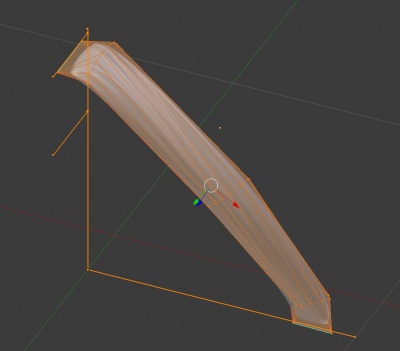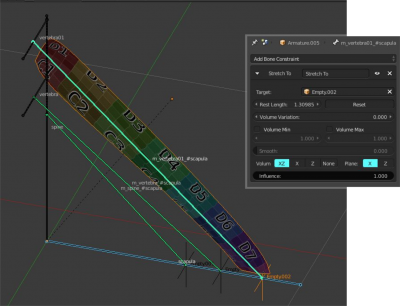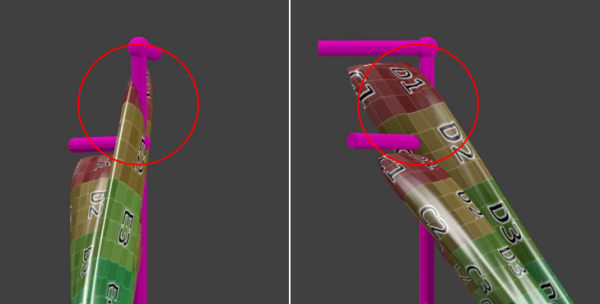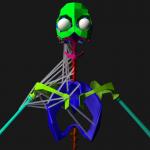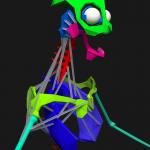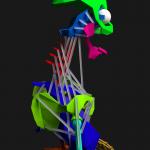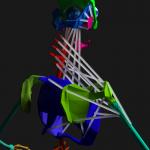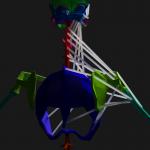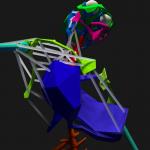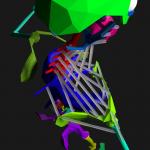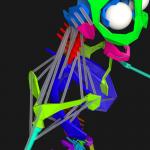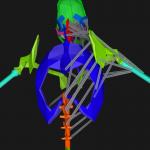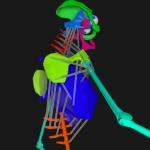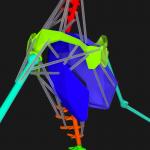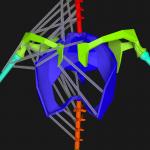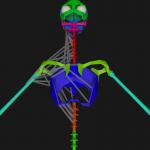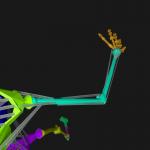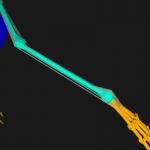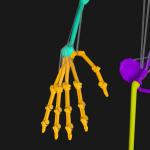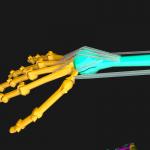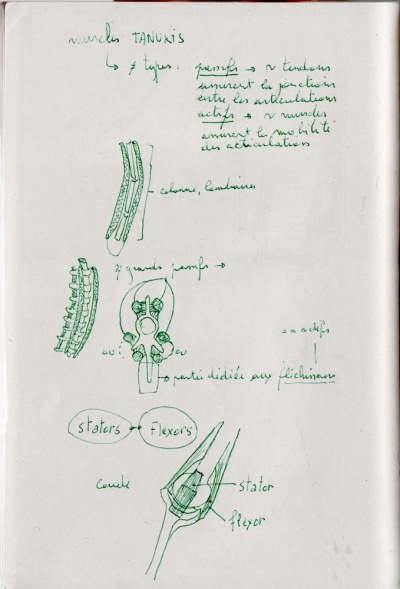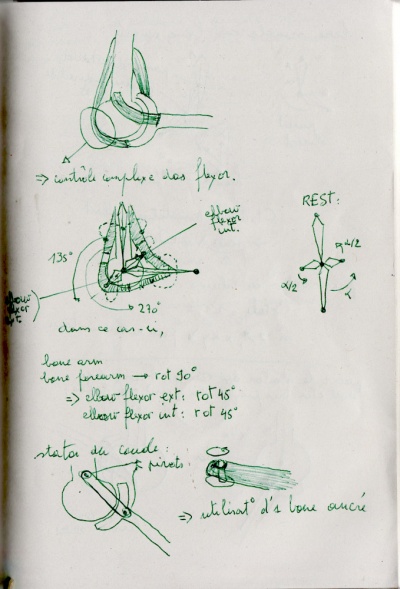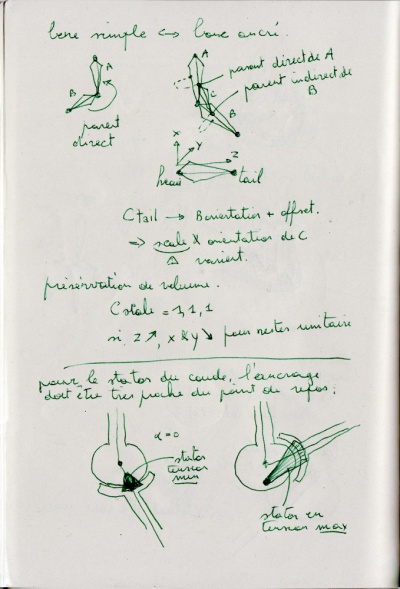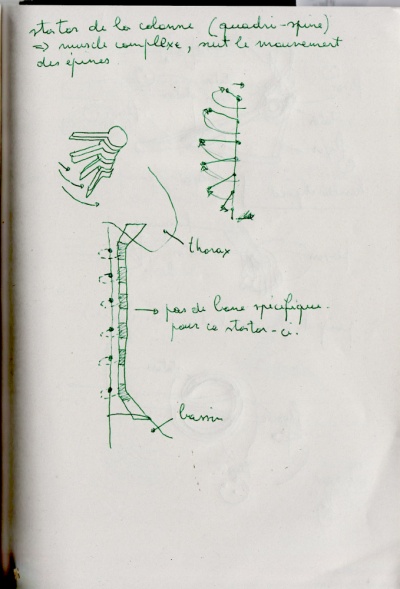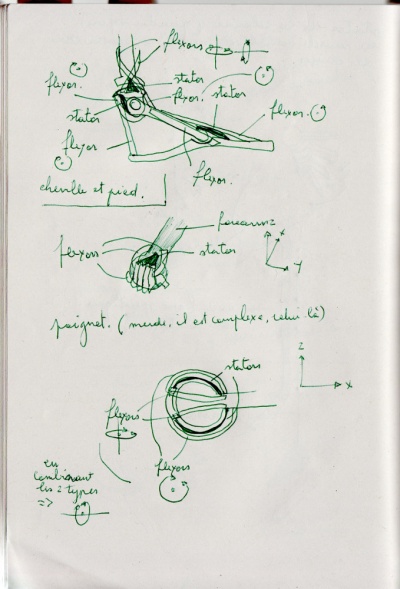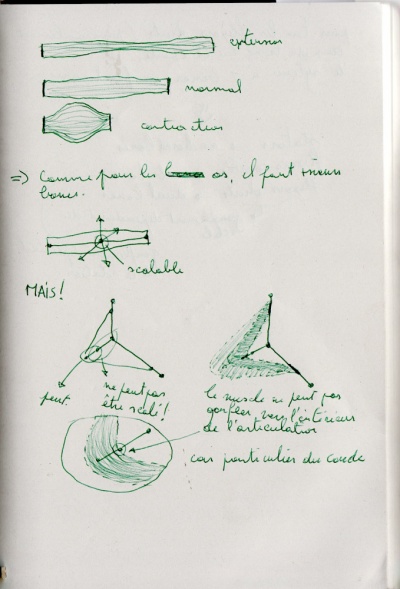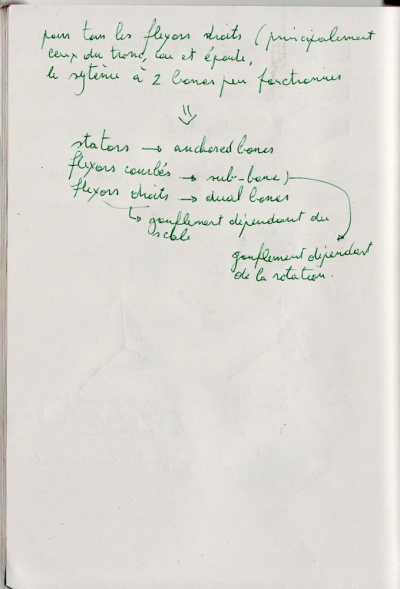Difference between revisions of "Modelling:Muscles"
Frankiezafe (Talk | contribs) (→Concepts) |
Frankiezafe (Talk | contribs) (→Concepts) |
||
| Line 88: | Line 88: | ||
First important distinction, there are 2 major kind of ''muscles'': | First important distinction, there are 2 major kind of ''muscles'': | ||
| − | * '''passive''' ones, similar to '''tendons''' - their role is to bring back the articulation in its rest state, and ensure the contact between 2 or more | + | * '''passive''' ones, similar to '''tendons''' - their role is to bring back the articulation in its rest state, and ensure the contact between 2 or more [[Modelling:Skeleton#cite_note-mbone-6|mbones]]; |
* '''active''' ones, similar to '''muscles''' - their role is to bend the articulations; they act in opposition to the passive muscles. | * '''active''' ones, similar to '''muscles''' - their role is to bend the articulations; they act in opposition to the passive muscles. | ||
| − | To simplify the notes, they are | + | To simplify the notes, they all are called '''activators'''<ref name="activator">group of objects attached to mbones to ensure motion and/or cohesion of the skeleton</ref>, and splits in 2 main groups: |
* '''stators'''<ref name="stator">passive 'muscle', acting like a tendon, ensures contact between mbones and tends to bring back the articulation in is rest state, by opposition to ''flexor''</ref>, the passive ones; | * '''stators'''<ref name="stator">passive 'muscle', acting like a tendon, ensures contact between mbones and tends to bring back the articulation in is rest state, by opposition to ''flexor''</ref>, the passive ones; | ||
* '''flexors'''<ref name="flexor">active 'muscle', acting like a muscle, bends the articulations, by opposition to ''stator''</ref>, the active ones. | * '''flexors'''<ref name="flexor">active 'muscle', acting like a muscle, bends the articulations, by opposition to ''stator''</ref>, the active ones. | ||
| + | |||
| + | |||
| + | Flexors can be of 3 types, depending on the shape of the articulation they are attached to: | ||
| + | |||
| + | * '''straight'''<ref name="activator_straight">straight activators: staying straight whatever the bending/extension, '''without''' modification of volume, by opposition to inflatable</ref>, requires a simple [[Modelling:Skeleton#cite_note-abone-5|abone]]; | ||
| + | * '''inflatable'''<ref name="activator_inflatable">inflatable activators: staying straight whatever the bending/extension, '''with''' modification of volume, by opposition to straight</ref>, requires at least 2 [[Modelling:Skeleton#cite_note-abone-5|abone]] to control the volume modification at the middle of the activator [[File:Muscles-sketchbook-scan006-web.jpeg|see elbow for sketch]]; | ||
| + | * '''curved'''<ref name="activator_curved">curved activators: curved to go around the articulation they are activating, [[File:Muscles-sketchbook-scan002-web.jpeg|see elbow for sketch]]</ref>., uses a different type of control [[Modelling:Skeleton#cite_note-abone-5|abone]]. | ||
| + | |||
| + | |||
| + | Stators can be of 2 types, depending on the shape of the articulation they are attached to: | ||
| + | |||
| + | * '''rotors'''<ref name="rotor_straight">rotor activators: one of the ends is attached to a single point, allowing it to rotate without bending; these activators are only stretching</ref>, requires a simple [[Modelling:Skeleton#cite_note-abone-5|abone]]; | ||
| + | * '''curved'''<ref name="activator_curved"/>. | ||
| + | |||
[[File:Muscles-sketchbook-scan001-web.jpeg|400px]] [[File:Muscles-sketchbook-scan002-web.jpeg|400px]] [[File:Muscles-sketchbook-scan003-web.jpeg|400px]] [[File:Muscles-sketchbook-scan004-web.jpeg|400px]] [[File:Muscles-sketchbook-scan005-web.jpeg|400px]] [[File:Muscles-sketchbook-scan006-web.jpeg|400px]] [[File:Muscles-sketchbook-scan007-web.jpeg|400px]] | [[File:Muscles-sketchbook-scan001-web.jpeg|400px]] [[File:Muscles-sketchbook-scan002-web.jpeg|400px]] [[File:Muscles-sketchbook-scan003-web.jpeg|400px]] [[File:Muscles-sketchbook-scan004-web.jpeg|400px]] [[File:Muscles-sketchbook-scan005-web.jpeg|400px]] [[File:Muscles-sketchbook-scan006-web.jpeg|400px]] [[File:Muscles-sketchbook-scan007-web.jpeg|400px]] | ||
Revision as of 15:36, 26 December 2016
Second layer of the tanukis, activating the bones: the muscles. It's a important part for the external shape of the avatar.
Contents
Rigging
To make sure my intuition was right, I've made a quick test of muscle animation using very simple armature:
- Each muscle is attached to 2 bones.
- Only one loop of vertices in the middle of the muscle.
Animation test:
Result is trashy.
Stretching the bone
In blender, bones can be constrained. One of the availabe constraints is Strecth to. Empties have to be attached to the target bone, at the anchor position on that bone. The test here contains:
- a spine - vertical bone
- 2 vertebras bones, perpendicular to spine
- 1 scapula - horizontal bone
Three extra bones have been created, one for each muscle. From bottom to top:
- m_spine_#scapula
- m_vertebra_#scapula
- m_vertebra01_#scapula
Each of the muscle bones is parented with the bone first bone mentionned in its name, and target the bone metionned after the #.
m_[parent bone]_#[target bone]
Some errors occurs in extreme bendings, but, generally, result is much better. A calculation has to be done at each frame. It is not standard in RT, so it will have to re-implemented in the game engine.
Curved muscles
For some articulations (wrist, knee, elbow, etc), muscles have to go around the bone "bubble" - see knee study.
Rigging and skinning will be complex to do blindly. Therefore, it is important to find a way to verify the behaviour of the mesh in blender.
The video is a reminder.
Scapular structure
First try to place the muscles on the skeleton. Trying to place them to allow plausible motion without too much collision problem when they will be animated. It is only vectors to give the direction, the modelling will come later.
The muscles for now are
- puller only, not piston;
- straights, meaning they can't touch and be deformed by muscles under
Right side only.
Humerus needs mesh adatptation to link large muscles, especially the one coming down from the scapula.
Wrist and metacarpian
Concepts
After some technical studies in blender, it is time to step back and think a bit. I do this kind of process in my sketchbook. All concepts I develop here are a summary of the notes scanned here below (in french).
First important distinction, there are 2 major kind of muscles:
- passive ones, similar to tendons - their role is to bring back the articulation in its rest state, and ensure the contact between 2 or more mbones;
- active ones, similar to muscles - their role is to bend the articulations; they act in opposition to the passive muscles.
To simplify the notes, they all are called activators[1], and splits in 2 main groups:
Flexors can be of 3 types, depending on the shape of the articulation they are attached to:
- straight[4], requires a simple abone;
- inflatable[5], requires at least 2 abone to control the volume modification at the middle of the activator
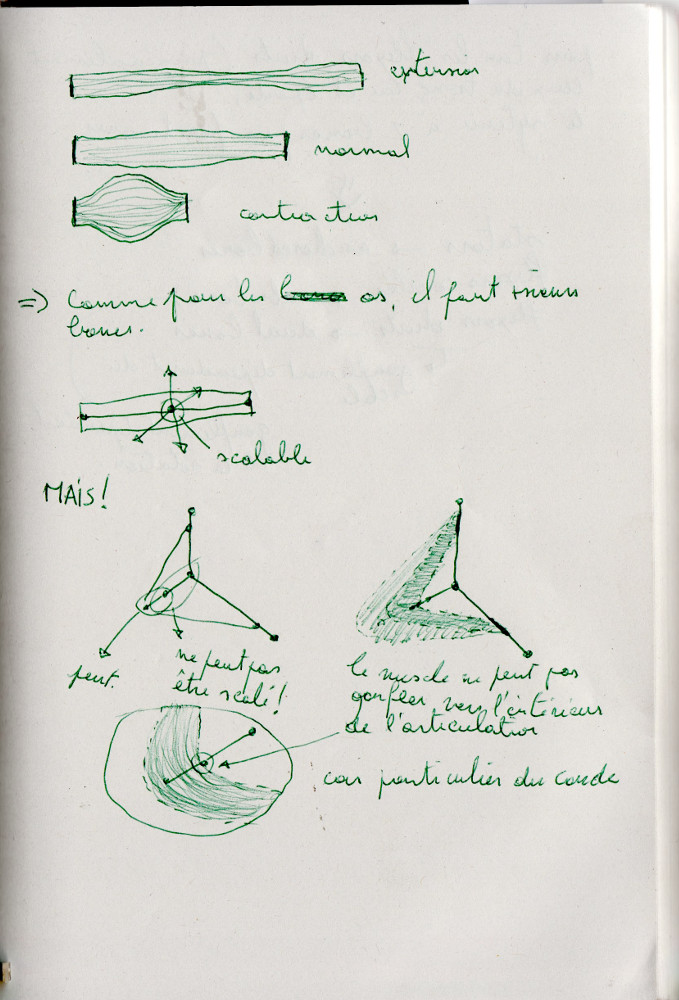 ;
; - curved[6]., uses a different type of control abone.
Stators can be of 2 types, depending on the shape of the articulation they are attached to:
Resources
20161210-muscles-structure
Musculoskeletal Robot
- ↑ group of objects attached to mbones to ensure motion and/or cohesion of the skeleton
- ↑ passive 'muscle', acting like a tendon, ensures contact between mbones and tends to bring back the articulation in is rest state, by opposition to flexor
- ↑ active 'muscle', acting like a muscle, bends the articulations, by opposition to stator
- ↑ straight activators: staying straight whatever the bending/extension, without modification of volume, by opposition to inflatable
- ↑ inflatable activators: staying straight whatever the bending/extension, with modification of volume, by opposition to straight
- ↑ 6.0 6.1 curved activators: curved to go around the articulation they are activating,
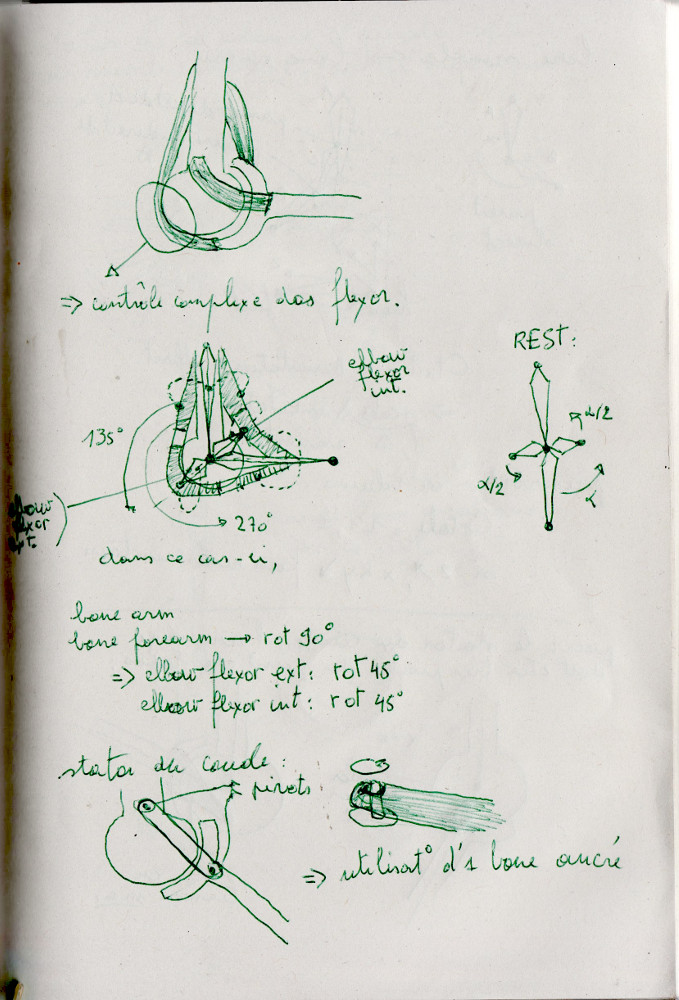
- ↑ rotor activators: one of the ends is attached to a single point, allowing it to rotate without bending; these activators are only stretching
